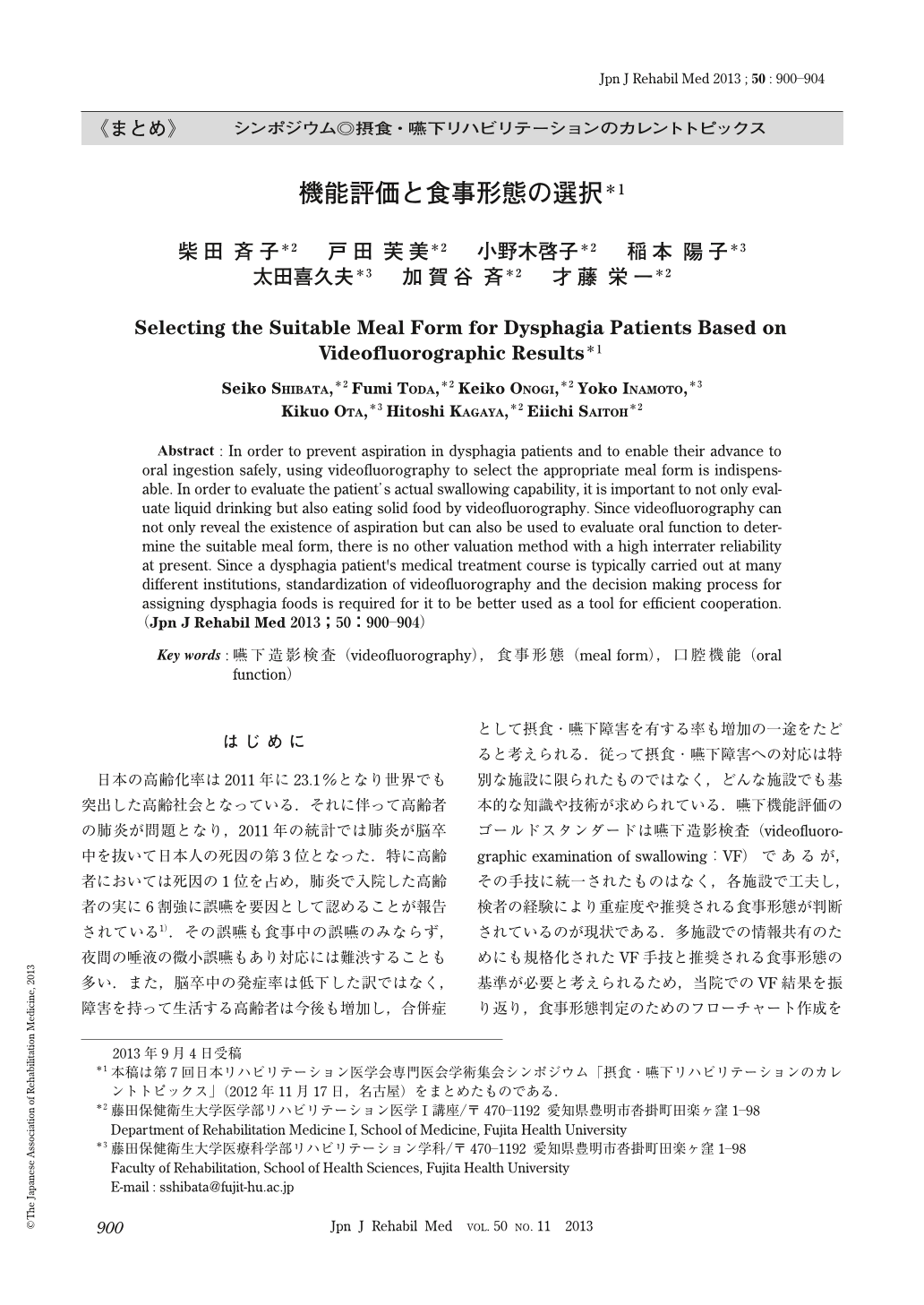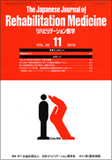Japanese
English
- 販売していません
- Abstract 文献概要
- 1ページ目 Look Inside
- 参考文献 Reference
はじめに
日本の高齢化率は2011年に23.1%となり世界でも突出した高齢社会となっている.それに伴って高齢者の肺炎が問題となり,2011年の統計では肺炎が脳卒中を抜いて日本人の死因の第3位となった.特に高齢者においては死因の1位を占め,肺炎で入院した高齢者の実に6割強に誤嚥を要因として認めることが報告されている1).その誤嚥も食事中の誤嚥のみならず,夜間の唾液の微小誤嚥もあり対応には難渋することも多い.また,脳卒中の発症率は低下した訳ではなく,障害を持って生活する高齢者は今後も増加し,合併症として摂食・嚥下障害を有する率も増加の一途をたどると考えられる.従って摂食・嚥下障害への対応は特別な施設に限られたものではなく,どんな施設でも基本的な知識や技術が求められている.嚥下機能評価のゴールドスタンダードは嚥下造影検査(videofluorographic examination of swallowing:VF)であるが,その手技に統一されたものはなく,各施設で工夫し,検者の経験により重症度や推奨される食事形態が判断されているのが現状である.多施設での情報共有のためにも規格化されたVF手技と推奨される食事形態の基準が必要と考えられるため,当院でのVF結果を振り返り,食事形態判定のためのフローチャート作成を試みた.
Abstract : In order to prevent aspiration in dysphagia patients and to enable their advance to oral ingestion safely, using videofluorography to select the appropriate meal form is indispensable. In order to evaluate the patient's actual swallowing capability, it is important to not only evaluate liquid drinking but also eating solid food by videofluorography. Since videofluorography can not only reveal the existence of aspiration but can also be used to evaluate oral function to determine the suitable meal form, there is no other valuation method with a high interrater reliability at present. Since a dysphagia patient's medical treatment course is typically carried out at many different institutions, standardization of videofluorography and the decision making process for assigning dysphagia foods is required for it to be better used as a tool for efficient cooperation.

Copyright © 2013, The Japanese Association of Rehabilitation Medicine. All rights reserved.


